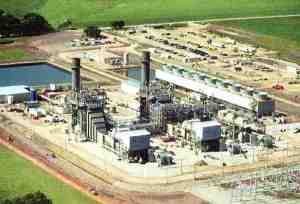The protracted heat and severe storms over the past year have affected most of our lives in some way. The extent of impact has ranged from inconvenient power losses during storms to loss of property and life during periods of hurricanes and tornadoes and their resultant flooding. Some of these effects are predicted while some other results come as a surprise.
We know that the harsh effects of climate change have signaled increased food prices all over the world. The United Nations Food and Agricultural Organization warns that any sudden and extreme price hikes in food are especially devastating to people in places such as Africa where undernourishment already is a significant problem. The current drought in the Midwestern United States and Russia, accounting for increased costs for maize and soybeans, could evolve into a catastrophe for tens of millions of people.
Although it may seem like a luxury to some, the availability of maple syrup is decreasing due to higher temperatures that have shortened the syrup collection seasons. The Proctor Maple Research Center at the University of Vermont predicts that the long-term effects of global warming “may lead to a shift in forest composition and the maple-beech-birch range will begin migrating northward to cooler areas”. Such migration will delay syrup production because it takes 40 to 50 years of maturation for a maple tree to produce enough sap for sugaring. While the decrease in maple syrup production is an inconvenience to pancake lovers, it poses a socioeconomic threat to a major industry in the northeastern region of the United States. Further information on this can be found at: http://www.news.cornell.edu/stories/Nov10/SyrupClimate.html
Global warming also harms many animals adapted to colder environments. An article in the U.S. News and World Report cites the difficulties faced by caribou in warmer temperatures. The caribou now arrive in West Greenland after the peak foraging period. “Fewer calves are being born, more calves are dying.” http://www.usnews.com/news/energy/slideshows/10-animals-threatened-by-global-warming. Additionally, polar bear litters are getting smaller as the amounts of sea ice declines from warmer temperatures. Earlier than usual spring sea ice break-up results in the failure of pregnant females to bring calves to term. Our warmer planet also threatens fish, such as trout and salmon, which thrive in cold streams. In addition to affecting the survival and propagation of sea life, the negative impact of warmer waters will also result in millions of dollars in lost revenues to the fishing industry in the United States alone.
In terms of recreation, climate change also poses some interesting threats to the availability of goods and services that enhance our lives. The increased temperatures, particularly in the south, potentially increase the chances for hyperthermia for outdoor athletes. This is especially a problem for football players. http://www.txchnologist.com/2011/heres-a-reason-to-care-about-climate-change-it-could-ruin-texas-football Unfortunately, the conservative south has led the way to block serious climate action. Also with global temperature rise, sea levels are expected to increase. Such occurrences threaten to submerge Florida’s coastal communities, which would be devastating to vacationers and the communities that rely on tourism for their survival.
Many other products that we enjoy also are threatened by climate change with its increased temperatures. These include coffee, beer (which relies on water for production), chocolate and many fruits, including grapes, which in turn, affect wine production. This list goes on and on but is limited here by space. Just think about the foods you buy and activities you enjoy. Many of these things may become more expensive or they may disappear entirely because of climate change.
Climate change is much more than a small cyclical inconvenience. It potentially poses a threat to life as we know it. To save our planet, let’s live green, be green.





